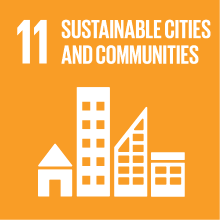ETRUSCOLOGY AND ITALIC ARCHAEOLOGY
- Academic year
- 2024/2025 Syllabus of previous years
- Official course title
- ETRUSCOLOGIA E ARCHEOLOGIA ITALICA SP.
- Course code
- FM0078 (AF:508824 AR:285260)
- Modality
- On campus classes
- ECTS credits
- 6
- Degree level
- Master's Degree Programme (DM270)
- Educational sector code
- L-ANT/06
- Period
- 2nd Term
- Where
- VENEZIA
- Moodle
- Go to Moodle page
Contribution of the course to the overall degree programme goals
It will be analyzed relationships with etrusco-italic, Mediterranean and European cultures; we pay attention to the chronological items and to material culture.
Our main focus is to improove ability to make chronological references for archaeological evidence of etruscan art and civilisation.
Single item will be selected and specifically oriented, in flipped classroom mode too.
Expected learning outcomes
- To know basic archaeological and technical terminology
- To Know development of settlements and cities in Venetic area
- To Know main theoretical models to analize urban societies
- To know main features of local material culture
2. Ability to apply knowledge and understanding
- To be able to employ archaeological and technical terminology
- To be able to apply theoretical models for the development of Venetic culture and landscape
- To be able to analyze settlements and cities
- To be able to analyze examples of material culture and artistic finds
3. Judgment skills
- To be able to judge and argue hypothesis about venetic contexts
4. Communication skills
- To be able to tell new finds or results of the research with a plain and technical terminology
- To be able to compare themselves with colleagues and tutor, even on.line
5. Learning ability
- To be able to take notes and to share them with colleagues, even on line
- To be able to consult bibliographic references even with a critical point of view
Pre-requirements
Contents
The course aims to develop knowledge and understanding of the eastern neighbours of Northern Italy in the Early Iron Age. The focus is going to be on the different cultural groups, stretching from the eastern Alpine ridge to the Pannonia plain, their specific material culture, burial customs, social organisation and other cultural characteristic, as well as settlement patterns and landscape organisation. Emphasis will be also placed on interdisciplinary research, which is often an added value to the traditional archaeological methodology. Students will be able to investigate case studies related to this area (all published in English) at their own choice, both in analytical form and for comparative analysis.
Referral texts
i.e. all the bibliography is available on line. Digital referring will be given at the first lecture.
ČREŠNAR, M., MELE, M. 2019 Early Iron Age landscapes of the Danube region. Budapest: Archaeolingua.
ARMIT, I. et alii 2013, Kinship practices in Early Iron Age South-east Europe : genetic and isotopic analysis of burials from the Dolge njive barrow cemetery, Dolenjska, Slovenia. Antiquity, vol. 97, iss. 392, 403-418.
ČREŠNAR, M. et alii 2020 Interdisciplinary research of the Early Iron Age iron production centre Cvinger near Dolenjske Toplice (Slovenia). Arheološki vestnik 71, 529-554, zvd.,
ČREŠNAR, M., VINAZZA, M. 2019, New research of hilltop settlements on the eastern fringes of Pohorje and the northern Slovenske gorice (NE Slovenia). Arheološki vestnik 70, 437-472
DULAR, J. 2016, Der eisenzeitliche Zentralort Vače und seine kriegerische Elite. Arheološki vestnik 67, 73-104.
DULAR, J., TOMANIČ-JEVREMOV, M. 2013, Ormož : befestigte Siedlung aus der späten Bronze- und der älteren Eisenzeit. Opera Instituti archaeologici Sloveniae, 18.
DULAR, J. 2013, Nordostslowenien in der späten Bronzezeit. Ljubljana: Inštitut za arheologijo ZRC SAZU: Založba ZRC, 2013. Opera Instituti Archaeologici Sloveniae, 27. .
DULAR, J., TECCO HVALA, S. 2007, South-eastern Slovenia in the early Iron Age : settlement, economy, society. Opera Instituti archaeologici Sloveniae, 12.
MLINAR, M., 2020. Most na Soči: the 2000-2016 archaeological investigations on the left bank of the Idrijca. Opera Instituti Archaeologici Sloveniae 43.
POTREBICA, H. 2016, The Princes of the Crossroads — The Early Iron Age in Northern Croatia. In: Davison D. et al. (eds.), Croatia at the Crossroads. A consideration of archaeological and historical connectivity Proceedings of conference held at Europe House, Smith Square, London, 24–25 June 2013 to mark the accession of Croatia to the European Union. Archaeopress Archaeology, Oxford.
POTREBICA, H., M. RAKVIN 2019, Tumulus IV on the Kaptol-Čemernica cemetery ‒ revision excavation. Vjesnik Arh. Muzeja Zagreb, 3.ser./ LII, 31-81.
SVOLJŠAK, Drago et alii 2016, The iron age settlement at Most na Soči : settlement structures and small finds. 1. e-izd. Ljubljana: Založba ZRC, 2016. Zbirka Opera Instituti archaeologici Sloveniae, 33..
SVOLJŠAK, Drago et alii 2016, The Iron Age settlement at Most na Soči : settlement structures and small finds. 1. izd. Ljubljana: Založba ZRC, ZRC SAZU, 2016. 364 str., ilustr. Zbirka Opera Instituti archaeologici Sloveniae, 33.
TERŽAN, B, ČREŠNAR, M. 2014, Absoplute dating of Bronze and Iron Ages in Slovenia. Katalogi in monografije 40.
TERŽAN, B, ČREŠNAR, M. 2021, Pohorsko Podravje three millennia ago : tradition and innovation in the Late Bronze and Early Iron Ages. Katalogi in monografije 44.
ŽIBRAT GAŠPARIČ, A. et alii 2018, Characteristics of early iron age pottery from north-eastern Slovenia through the prism of ceramic technology and petrography. Documenta Praehistorica. Poročilo o raziskovanju paleolitika, neolitika in eneolitika v Sloveniji. Neolitske študije= Neolithic studies. [Tiskana izd.]. vol. 45, str. 180-202, ilustr. ISSN 1408-967X.
Assessment methods
Type of exam
Teaching methods
Lectures and exercises
On.line papers for specific topics.
Flipped classroom
Teaching language
2030 Agenda for Sustainable Development Goals
This subject deals with topics related to the macro-area "Cities, infrastructure and social capital" and contributes to the achievement of one or more goals of U. N. Agenda for Sustainable Development


